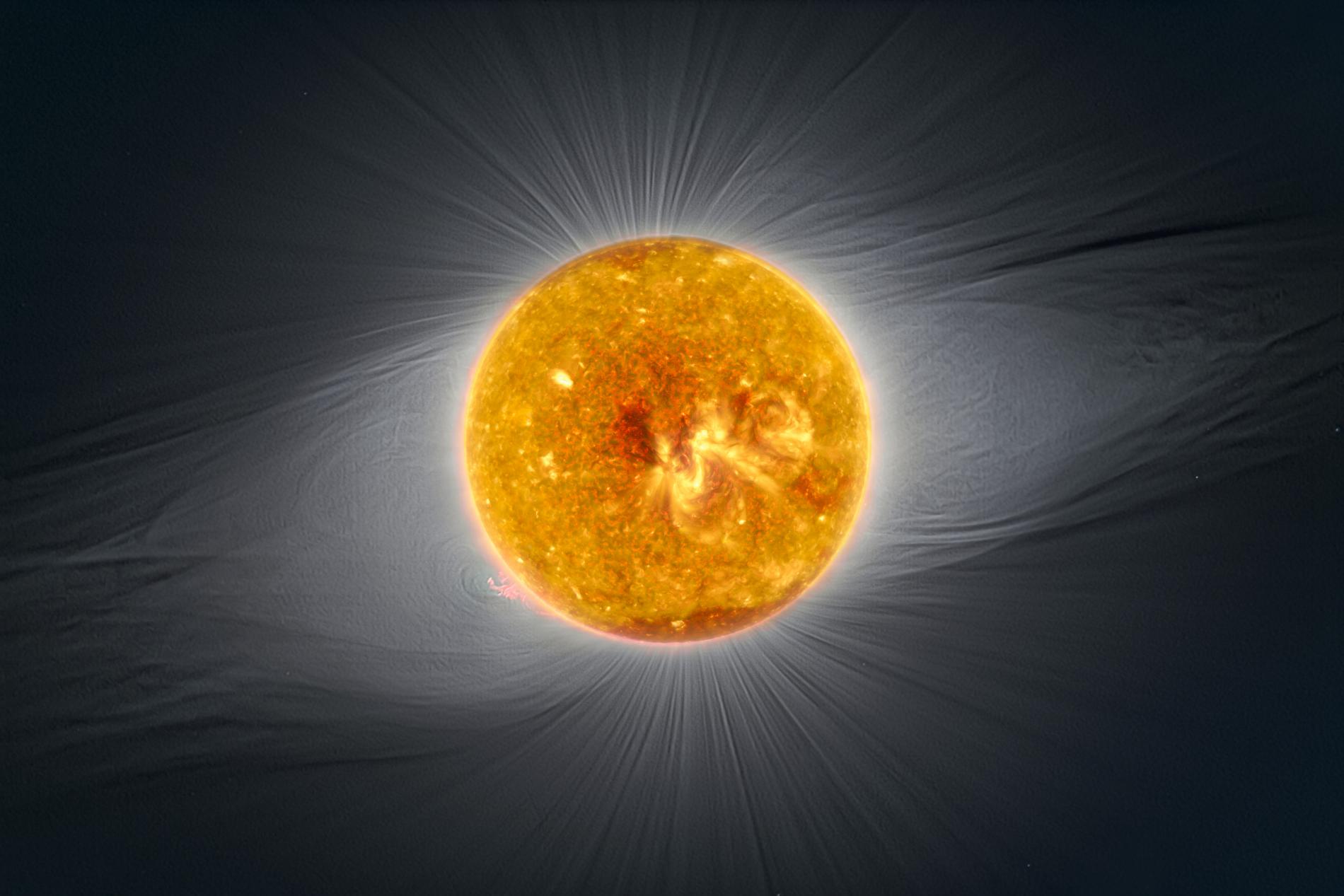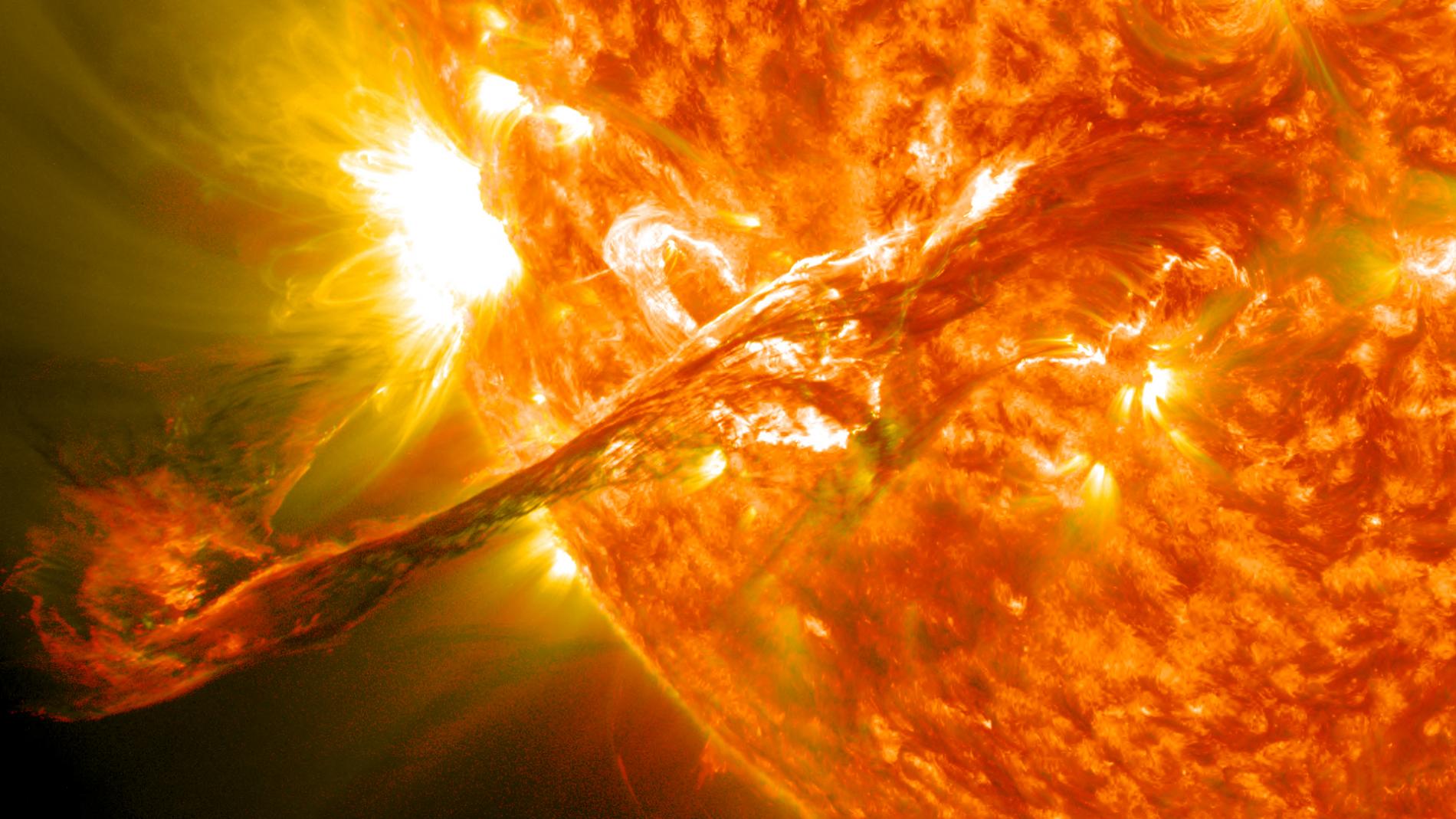Small force, big effect: how planets can affect the Sun
The Institute of Astrophysics of Andalusia (IAA-CSIC) is involved in developing a theory that supports the hypothesis that planets affect the Sun's magnetic activity. It shows how the small influence of the planets could set a rhythm in a system like the Sun that, if confirmed, would allow events such as solar storms to be predicted more accurately
In 2012, a study in which the Institute of Astrophysics of Andalusia (IAA-CSIC) participated published the hypothesis that the planets could influence the Sun: the solar magnetic activity during the last ten thousand years was reconstructed by analyzing the concentration of beryllium -10 and carbon-14 in ice from Antarctica and Greenland and compared with the movement of the planets around the Sun. Coincidences were found that suggested a link, a result opposed to the general conviction that the influence of the planets on the Sun is negligible. A theoretical explanation of how this could happen is published today, a new model that, if confirmed, will allow more accurate predictions of solar phenomena.
NEW EXPLANATION FOR A CONTROVERSIAL HYPOTHESIS
An international scientific team comprising researchers from the IAA-CSIC, the EAWAG of the Swiss Federal Institute of Technology (ETH) and the Zurich University of Applied Sciences (ZHAW) proposes an explanation for how the small tidal effect of the planets could influence the Sun's magnetic activity: stochastic resonance. Under certain conditions, this phenomenon can amplify weak, mostly periodic signals to the point where they produce significant consequences.
The stochastic resonance mechanism was proposed in 1981 to explain the alternation between terrestrial glacial and interglacial periods as a consequence of the variation of the Earth's orbital parameters (known as the Milankovitch theory), and is related to the concept of bistability.
The Sun has an eleven-year cycle, during which its magnetic activity (manifested in the form of spots, explosions and ejections of matter into interplanetary space) ranges from a minimum to a maximum. But there are other cycles of longer periods. "We have been able to show that the Sun has two stable states of activity: an active state with great amplitude and high solar activity, and a calmer state with a small amplitude and less solar activity –indicates Carlo Albert, an EAWAG-ETH researcher involved in the study–. It would be a bistable system: we suppose that the Sun jumps between these two states due to the turbulence in its interior”. And, since turbulence occurs randomly, these changes would be expected to occur in a completely irregular and unpredictable way.
Data for measuring solar activity suggest, however, that the jump from one state to another does not occur randomly, but often has a rate of about two hundred years. It would be a cycle superimposed on the eleven-year cycle, which the 2012 work attributed to the influence of the planets but without explaining how such small bodies could affect the Sun, whose mass constitutes 99.86% of the entire Solar System.
In the work published today in the Astrophysical Journal Letters, a way to amplify that influence is proposed. “The ingredients of our model are three: bistability, a periodically modulated signal (coming from the weak tidal force exerted by the planets), and noise in the system, caused by the turbulent convection existing in an area of the Sun that goes from the surface to a depth of about 200,000 kilometers –indicates Antonio Ferriz Mas, IAA-CSIC researcher and professor at the University of Vigo who participates in the work–. There is an optimal noise intensity such that the weak signal from the planets' tidal forces is amplified enough to influence the generation of the Sun's magnetic field.

TOWARDS A NEW GRAND SOLAR MINIMUM?
In a next step, the team will study to what extent observations of solar activity over the past centuries can be reproduced with this method. This would confirm the theory and also allow one more step: to predict solar activity for the next decades and centuries.
Such a prediction would be of great interest, since it seems that we are facing a turning point in solar activity. According to the 2012 hypothesis, now supported by this work, the Sun is at the end of an active phase and slowly moving towards a calmer one, and the first signs that the eleven-year cycle is weakening have been observed.
These quiet phases are known as great minima, and the data suggests that the Sun has experienced several over the past millennia. The last occurrence of a great minimum, which took place between approximately 1645 and 1715, coincided with the most intense stage of an especially cold period in much of Europe, known as the Little Ice Age (although it is not clearly demonstrated that there is a cause-effect relationship between both phenomena). It will, however, be a few more years before we know for sure whether the Sun will enter a new grand minimum.

C. Albert, A. Ferriz-Mas et al. "Can Stochastic Resonance explain Recurrence of Grand Minima?". Astrophysical Journal Letters, July 2021. https://iopscience.iop.org/article/10.3847/2041-8213/ac0fd6
Instituto de Astrofísica de Andalucía (IAA-CSIC)
Unidad de Divulgación y Comunicación
Silbia López de Lacalle - sll[arroba]iaa.es - 958230676
https://www.iaa.csic.es
https://divulgacion.iaa.csic.es

